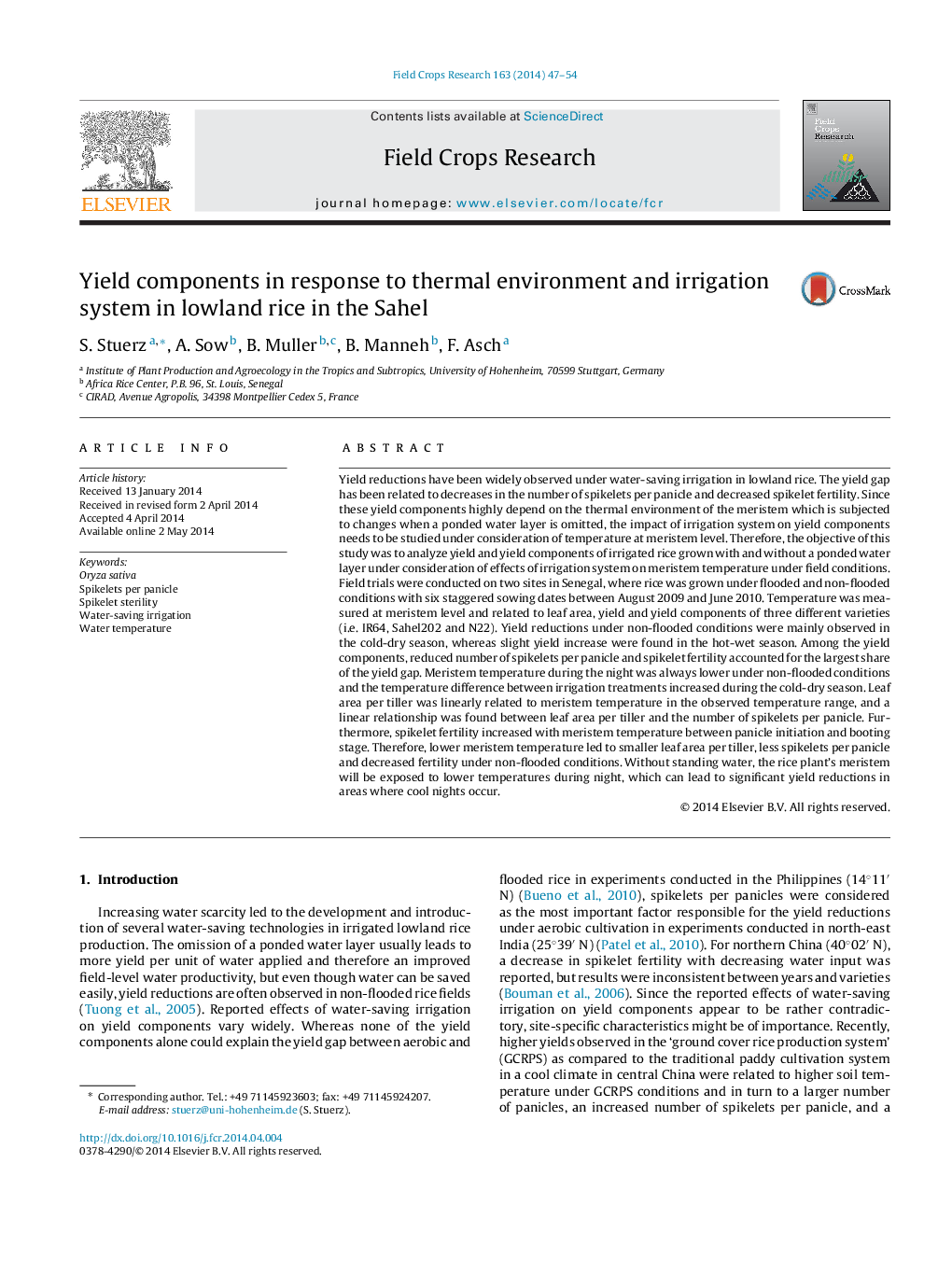| کد مقاله | کد نشریه | سال انتشار | مقاله انگلیسی | نسخه تمام متن |
|---|---|---|---|---|
| 4510110 | 1624700 | 2014 | 8 صفحه PDF | دانلود رایگان |
• Yield was compared for rice sown on 6 dates on 2 sites with and without ponded water.
• Without ponded water, yield was mainly reduced in the cold-dry season.
• Yield gap could be attributed to less spikelets per panicle and reduced fertility.
• Number of spikelets per panicle was correlated with leaf area per tiller at flowering.
• Differences in leaf area and fertility were attributed to meristem temperature.
Yield reductions have been widely observed under water-saving irrigation in lowland rice. The yield gap has been related to decreases in the number of spikelets per panicle and decreased spikelet fertility. Since these yield components highly depend on the thermal environment of the meristem which is subjected to changes when a ponded water layer is omitted, the impact of irrigation system on yield components needs to be studied under consideration of temperature at meristem level. Therefore, the objective of this study was to analyze yield and yield components of irrigated rice grown with and without a ponded water layer under consideration of effects of irrigation system on meristem temperature under field conditions. Field trials were conducted on two sites in Senegal, where rice was grown under flooded and non-flooded conditions with six staggered sowing dates between August 2009 and June 2010. Temperature was measured at meristem level and related to leaf area, yield and yield components of three different varieties (i.e. IR64, Sahel202 and N22). Yield reductions under non-flooded conditions were mainly observed in the cold-dry season, whereas slight yield increase were found in the hot-wet season. Among the yield components, reduced number of spikelets per panicle and spikelet fertility accounted for the largest share of the yield gap. Meristem temperature during the night was always lower under non-flooded conditions and the temperature difference between irrigation treatments increased during the cold-dry season. Leaf area per tiller was linearly related to meristem temperature in the observed temperature range, and a linear relationship was found between leaf area per tiller and the number of spikelets per panicle. Furthermore, spikelet fertility increased with meristem temperature between panicle initiation and booting stage. Therefore, lower meristem temperature led to smaller leaf area per tiller, less spikelets per panicle and decreased fertility under non-flooded conditions. Without standing water, the rice plant's meristem will be exposed to lower temperatures during night, which can lead to significant yield reductions in areas where cool nights occur.
Journal: Field Crops Research - Volume 163, July 2014, Pages 47–54
